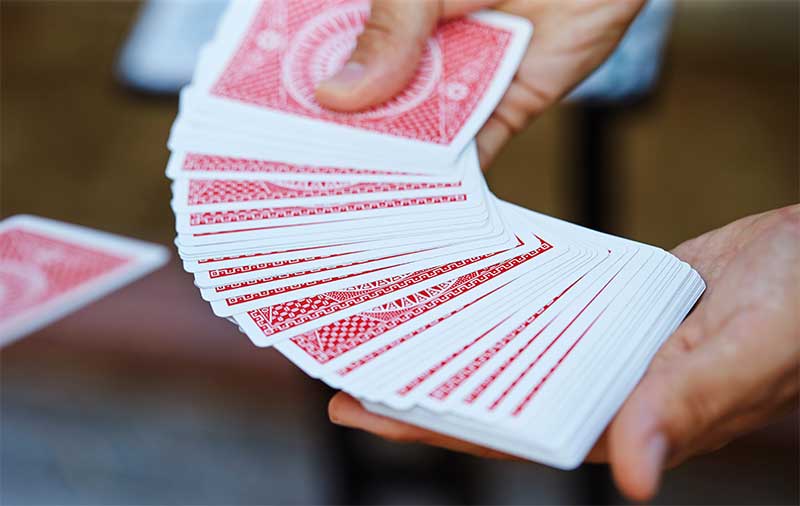No, a random walk is not a martingale. A random walk is a statistical model that describes a process in which the next step is determined randomly, without any regard for the previous steps. Each step in a random walk is independent of the ones that came before it.
A martingale, on the other hand, is a betting strategy that involves increasing the amount of money wagered on a bet after a loss. The idea behind a martingale is that by increasing the bet after each loss, the bettor will eventually win back their losses and make a profit.
While a random walk and a martingale may seem similar in the sense that both involve a certain amount of randomness, they are fundamentally different concepts.
A random walk is a statistical model that describes the behavior of a process over time, whereas a martingale is a betting strategy that is used to try to achieve a profit.
Note that a martingale theory is a type of random walk in which each step is unbiased and the number of dimensions is not specified. So, a random walk can be a martingale in the conditional expectation that each step in the process or the model itself is unbiased.
Random Walk and Martingale in Gambling – Are They Related?
A random walk is a term used to describe a situation in which the outcome is determined by a series of random events, rather than by a deterministic cause. In gambling, a random walk can refer to the outcome of a game or the path of a gambler’s fortunes.
For instance, the outcome of a game of craps may be described as a random walk, because it is determined by the random roll of the dice. Similarly, the path of a gambler’s fortunes may be described as a random walk, because it is influenced by the unpredictable outcome of each individual bet.

Using a random walk strategy in roulette, a player might bet on a series of pockets based on the outcomes of previous spins. For example, if the ball lands in a red pocket on the first spin, the player might bet on a black pocket for the second spin.
If the ball lands in a black pocket on the second spin, the player might then bet on a red pocket for the third spin, and so on. The idea behind this strategy is that the outcomes of the roulette spins will tend to even out over time, allowing the player to profit from the random walk by betting on the opposite outcome each time.
On the other hand, a martingale is a strategy that involves increasing the amount of the bet after each loss, in an attempt to recoup previous losses and make a profit.
The idea is that, eventually, the bet will win, and the profits will cover all of the previous losses.
A random walk is not a betting strategy, but rather a description of the path of a series of random events. However, it is possible to use a martingale betting strategy in conjunction with a game or situation that exhibits a random walk.
For instance, a gambler might use a martingale strategy while playing craps, which is a game with a random walk outcome determined by the roll of the dice. In this case, the gambler would increase their bets after each loss, in the hope that they will eventually win and recoup their losses.
Random Walk Explained
A random walk is a path traced by a series of random steps. It can be thought of as a process in which the next move is determined by a random event, rather than by a predetermined plan, cause, or rule.
You can compare a random walk to flipping a coin or rolling a die to predict the next outcome of the game. For instance, if you were playing a game in which you had to navigate through a maze, you might use a random walk strategy by flipping a coin at each fork in the path to decide which way to go. The outcome of each coin flip would be determined by the random flip of the coin, and the path that you took through the maze would be a random walk.
Random walks are an important concept in mathematics, physics, and computer science. Moreover, they have applications in fields such as finance, gambling, biology, and engineering.
Types of Random Walks
There are several different types of random walks that can be distinguished based on the nature of the steps and the rules governing the movement. Some common types of random walks include:
- Biased random walk: In a biased random walk, the steps are not equally likely to be taken in any direction. Instead, there is a bias towards one direction or another, so that certain steps are more likely to be taken than others. This type of random walk can be used to model processes in which there is a preference for certain outcomes or a tendency to move in a particular direction.
- Brownian motion: Brownian motion is a type of random walk that describes the random movement of particles suspended in a fluid. It is named after the botanist Robert Brown, who first described the phenomenon in 1827. Brownian motion is caused by the random collisions of the particles with the molecules of the fluid, and it can be used to model processes such as diffusion and heat transfer.
- Correlated random walk: This is a type of random walk where the steps are not independent and identically distributed, but instead are correlated with each other. This means that the probability of a given step depends on the previous steps in the process.
- Lévy flight: A Lévy flight is a type of random walk in which the steps are long and irregular, rather than being of a fixed size. This type of random walk is often used to model the movement of animals or particles, as it can capture the idea of sudden, large movements followed by periods of inactivity.
- Markov chain: A Markov chain is a type of random walk in which the next step is determined only by the current state, rather than by the entire history of the walk. This means that the probability of transitioning to a particular state depends only on the current state, and not on the sequence of states that led to it. Markov chains are used to model a wide range of phenomena, including financial markets, biological systems, and computer networks.
- Random walk with memory: In a random walk with memory, the next step is determined not only by the current state, but also by the recent history of the walk. This type of random walk is used to model processes in which the future is influenced by the past, such as the movement of particles in a viscous fluid or the evolution of a system over time.
- Simple random walk: Simple random walks are sequences of steps in which each step is equally likely to be taken in any direction (for example, north, south, east, or west). This type of random walk is often used to model the movement of particles or the spread of a virus or other contagion.
Pros and Cons of Using a Random Walk Strategy in Gambling
Pros:
- The random walk strategy can be easy to understand and implement, as it simply involves betting on the opposite outcome each time.
- Because it relies on the idea that the outcomes of random events will tend to even out over time, the random walk strategy can be seen as a way to take advantage of the law of averages.
- Depending on the game being played, the random walk strategy might be able to take advantage of any biases or patterns that exist in the outcomes of the game.
Cons:
- There is no guarantee that the random walk strategy will be successful, as the outcomes of gambling games are completely random and cannot be predicted with certainty.
- The random walk strategy can be risky, as it involves making an increasing series of bets in an attempt to recoup losses. If the bets continue to lose, the losses can quickly add up, and the gambler could run out of money before winning a bet.
- The random walk strategy does not take into account the specific odds or payouts of the game being played, and it does not consider the overall probability of winning or losing. This can make it difficult to accurately assess the potential returns or risks of the strategy.
Understanding a Martingale Process
A martingale is a betting strategy in which you increase your stake after each loss, in an attempt to recoup previous losses and make a profit. The idea is that, eventually, the bet will win, and the profits will cover all of the previous losses.
For example, imagine that you are playing a game of roulette and you start by betting $1 on a particular color (Red or Black). If you lose the bet, you might decide to double your bet to $2 on the next spin, in the hope that you will win and recoup your loss. If you lose again, you might double your bet again to $4, and so on.

The martingale betting strategy is based on the idea that, over time, the outcomes of the roulette spins will tend to even out, and you will eventually win a bet. The strategy assumes that you will eventually win, and that the profits from that win will cover all of your previous losses.
Type of Martingale Strategies Used in Betting
The objective of using the random walk betting process is to increase your chances of loss recovery. As such, you can apply it in the following varieties:
- The mini martingale: The Mini Martingale system is a variable that controls the number of double bets to evade losses. It provides a platform for you to analyze and roughly predict how far you can go. In addition, it tries to limit you from utilizing all your money from your casino wallet. It is difficult to lose all your money since you evenly spread your risk and rely on an efficient wagering process. However, employing this random walk variant only results in minimal profits and requires patience.
- The reverse martingale: You can also implement the reverse martingale in your random walk betting process. It involves you doubling your bets after each win, which may result in even bigger wins when successful. However, you need to be cautious when implementing this technique since a single loss can be catastrophic. Therefore, ensure you have an effective start-stop strategy to minimize the impact of losing.
- For example, you can stop playing and withdraw your profits after a streak of five games. Then, use the balance to start over and pray for a similar outcome. As such, the results are inconsequential since you will be playing with bonus cash.
- The grand martingale: The grand martingale entails you staking an amount more than double your bet amount for the next round. For example, if you lose from a $10 bet, your next bet should be higher than $20, say $25. This is because a win from the $25 may result in cash prizes far larger than your losses combined. However, the greatest disadvantage of using this variant of the random walk betting process is you can incur huge losses over time.
Pros and Cons of Martingale Betting Strategy
Pros:
- Can potentially help recover losses
- Simple to understand and implement
Cons:
- Carries the risk of significant financial losses if used without limits
- May not be effective in the long run due to the law of large numbers
- May not be allowed or practical in certain gambling settings
Is a Random Walk a martingale?
No, a random walk is not a martingale.
A random walk is a process in which the next step is determined by a random event, and it can be thought of as a path traced by a series of random steps. An unbiased random walk is one in which all possible steps are equally likely, and there is no bias towards any particular direction.
A martingale is a betting strategy that involves increasing the amount of the bet after each loss, in an attempt to recoup previous losses and make a profit.
A martingale is not a random process itself, but it can be used in conjunction with a game or situation that exhibits a random process.
While a random walk can be used to describe the outcome of a gambling game or other process with a random outcome, it is not a betting strategy and does not involve placing bets or increasing the size of a bet. Therefore, a random walk is not a martingale.
What is a Random Walk process?
A random walk is a statistical model that describes a stochastic process in which the next step is determined randomly, without any regard for the previous steps. In other words, each step in a random walk is independent of the ones that came before it.

Random walks are often used to model processes that involve a certain amount of randomness or uncertainty. For example, they can be used to model the movement of prices in financial markets, the spread of a disease through a population, or the movement of a particle suspended in a fluid.
A random walk is characterized by the fact that the next step is determined randomly, with no regard for the previous steps.
This means that the probability of each step is fixed and does not change over time. As a result, a random walk tends to produce a pattern of behavior that is somewhat unpredictable and difficult to forecast. However, over time, the behavior of a random walk tends to converge towards certain statistical properties, such as a normal distribution.
Where are random walks used?
Random walks are used to model a wide range of situations in many different fields. Some examples of areas where random walks are used include:
- Physics: Random walks are used to model the movement of particles, such as the diffusion of gases or the Brownian motion of particles suspended in a fluid.
- Biology: Random walks are used to model the movement of animals or the spread of a contagion, such as the spread of a disease through a population.
- Economics: Random walks are used to model the movements of financial markets, such as the stock market or foreign exchange market.
- Computer Science: Random walks are used in algorithms for tasks such as web crawling and network analysis.
- Social Science: Random walks are used to model the spread of ideas or opinions through a population.
Is Brownian motion a martingale?
Yes, Brownian motion is a martingale. This is because, for any time t, the expected value of the next step in the process (at time t+1) is equal to the current value of the process (at time t). This means that the expected value of the process at any given time is equal to the initial value, and therefore the process satisfies the martingale condition.
